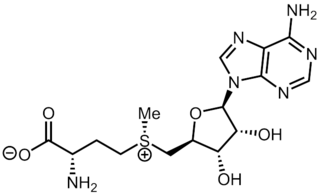| tRNA-uridine aminocarboxypropyltransferase | |||||||||
|---|---|---|---|---|---|---|---|---|---|
| Identifiers | |||||||||
| EC no. | 2.5.1.25 | ||||||||
| Databases | |||||||||
| IntEnz | IntEnz view | ||||||||
| BRENDA | BRENDA entry | ||||||||
| ExPASy | NiceZyme view | ||||||||
| KEGG | KEGG entry | ||||||||
| MetaCyc | metabolic pathway | ||||||||
| PRIAM | profile | ||||||||
| PDB structures | RCSB PDB PDBe PDBsum | ||||||||
| Gene Ontology | AmiGO / QuickGO | ||||||||
| |||||||||
In enzymology, a tRNA-uridine aminocarboxypropyltransferase (EC 2.5.1.25) is an enzyme that catalyzes the chemical reaction
- S-adenosyl-L-methionine + tRNA uridine 5'-methylthioadenosine + tRNA 3-(3-amino-3-carboxypropyl)-uridine
Thus, the two substrates of this enzyme are S-adenosyl-L-methionine and tRNA uridine, whereas its two products are 5'-methylthioadenosine and tRNA 3-(3-amino-3-carboxypropyl)-uridine.
This enzyme belongs to the family of transferases, specifically those transferring aryl or alkyl groups other than methyl groups. The systematic name of this enzyme class is S-adenosyl-L-methionine:tRNA-uridine 3-(3-amino-3-carboxypropyl)transferase.

